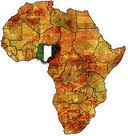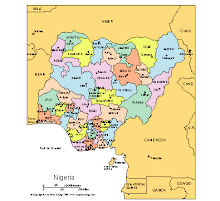I yield this page to Professor Onwumechili. His analysis of the Nigerian team in the African Nations Cup match between Nigeria and Cote d'ivoire is spot on! Please read on.
As we all know, Nigeria went into the Ivory Coast game as the underdog. Ivory Coast is the No. 1 ranked African team and their galaxy of stars playing in the best clubs in Europe were clearly, on paper, expected to overwhelm a rebuilding Nigerian team that had few recognizable players.
When the Nigerian coach Stephen Keshi claimed that he had a game plan for the Ivoreins few believed him because it is not just about having a game plan but the question is do you have the players to execute such a plan against a perceived superior opponent. What we saw on Sunday was the coach’s game plan designed to take advantage of weak spots in the Ivorein team and the self-belief of the Nigerian players that victory was indeed possible.
HOW NIGERIA PLAYED
Nigeria played a tight formation, still using its 4-3-3, but leaving few gaps between the midfield and the defense and thus limiting passing channels for their opponents. This did not always work as Drogba’s running behind the defense proved problematic a few times when he was not cut out by the offside trap. Nigeria used its variation of passes between the short possession play and the long balls exploring behind the Ivory Coast defense that was designed to take advantage of the pace of Nigerian forwards. Early on, however, the long balls that have been helpful in some of the previous games failed to work for two major reasons. First, the surface was slick with the rain which caused the ball to skid slightly and secondly, the surface with the rains slowed the ability of the forwards to get to the ball. Thus, several long balls went unutilized forcing the team to switch away from the long balls after half an hour or so. The possession short passes worked, however, as Nigeria surprisingly dominated the Ivoreins in this phase with well over 50% of the possession in the opening half. Importantly, we also saw Nigeria’s creative use of the set pieces with Ideye being the target on the weak side of the defense on several of Moses’ free kick. Though Ideye failed to score he proved a handful as Ivory Coast struggled to defend this.
The major change in Keshi’s game plan that we rarely saw in the previous games was the decision to shoot at goal from distance. It is clear that this was the new wrinkle designed solely for this game because the crew saw Barry’s goalkeeping as a weakness. That Victor Moses shot from as far as 25 or 30 yards out after only nine minutes of play underlined this focus.
Defensively, Nigeria was solid. The most important tactics was closing down the gap between defense and midfield which nullified the pace of Kalou and Gervinho that was so evident in previous Ivory Coast games. Then late in the game, Nigeria killed off any Ivory Coast chance of coming back by not only possessing the ball and delaying the game (This was the issue in the Burkina Faso game) but for the second game running the coaches introduced Yobo in the center of the defense switching to a 5-4-1 to protect the lead.
Concerns
In my opinion, there remain a few concerns with this team. There are concentration lapses. One led to a goal but there were a few others. The Ivory Coast goal was surprising with lax marking in the box that left Tiote completely free to connect with a header at the back end of the defense. Another occurred in the 85th minute when Lacina Traore was left free to bring down a ball deep in the six yard box and it was only Mikel’s alertness to slip the ball away that preserved the 2-1 lead.
My tuppence
Professor Onwuemechilli
* this piece was first posted on the popular Nigerian Soccer fans board: Cybereagles and it is reproduced here with permission.
Monday, February 4, 2013
Subscribe to:
Posts (Atom)

